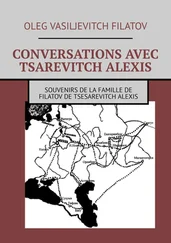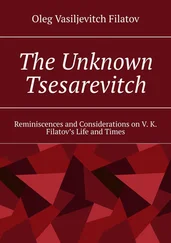
Fig. 10.Karl Bryullov. Portrait of P. Chikhachev (1835).
Thus, was all of it happened later, and in August, 1868, Calvert saw the dear visitor in his house on the shore and convinced him to join the excavations assuring him, “All my land [on the Hisarlik Hill] is at your disposal”. [17] V.P. Tolstikov, “Heinrich Schliemann and Trojan Archaeology”, The Treasures of Troy. The Finds of Heinricha Schliemann. Exhibiton catalogue (Мoscow: Pushkin State Museum of Fine Arts: Leonarde Arte, 1996); p. 18.
Having felt the scale of profit in case they succeeded, Schliemann agreed to take part in the project. As early as in December he started consulting with the highly experienced Calvert about organization of excavations, in particular – in regard to quantification of mattocks and shovels for the works. At the same time he negotiated with the Turkish government for a license for archaeological works.
At last, on October 11, 1871 having employed workers in the near villages, Heinrich Schliemann started soil works. Calvert tried to prevent his comrade from hasty decisions and advised him to carry out the sounding of cultural layers of more than 17 meters deep, at first. However, Schliemann, being sure that Homer’s Troy was the most ancient thing of everything possible, decided to dig down to the very continental plate.
Long trenches up to seventeen meters deep and wide ruthlessly cut up the Hisarlik Hill, until Schliemann managed to dig down to an ancient settlement, destroying everything of no interest to him and not shining under the sun. Schliemann announced that he had discovered the ruins of the city of Priam.
The merchant’s barbarous approach to excavations not only deprived future scientists of the most valuable archaeological information, but also resulted in destroying the traces of the old city he had discovered. Left to the mercy of fate in the aggressive environment, they began to crumble and get weathered, suffering from roots of trees and bushes.
They managed to halt the destruction process only in 1988, when expedition participants began to protect the walls of the ancient citadel by their own efforts, led by Professor of Tubingen University Manfred Korfmann.
The thickness of the cultural layer of seventeen meters, though accumulated for some thousands of years, seemed unbelievable until we learned about their origin. “Fires often occurred, as wood and straw were used for construction [during the Bronze century],” Professor Carl Blegen explained, who used to excavate Hisarlik Hill in 1932–1938. “When a house burned down, its roof would collapsed and its walls would scatter. […] Since there were no bulldozers or graders then, nobody tried to clear the site of the fire or to remove the waste. It was much easier to level the site, covering the not remaining fragments of a building with a thick layer of waste (which ensured the noticeable growth of the cultural layer), and then to build a new house on the same spot. In Troy, such things happened rather often, and every time the ground level rose by 80–100 centimeters. Steady growth of the cultural layers on the hill also occurred due to other factors. For example, floors in all dwellings but palaces and magnificent private residences were made of earth or compacted clay. People weren’t used to collect domestic and kitchen wastes at certain special sites then. So, all wastes, including bones, food waste and broken utensils were left on the floor of the dwelling or were immediately chucked away to the outside. Sooner or later, the floor appeared to be covered with animal bones and wastes so much that even hosts with strongest stomachs understood that something should have been done about it. Solving the issue was simple and rather efficient: waste from the floor was not cleaned out, but was covered with a thick layer of fresh clay, which was compacted after that. During the excavation, the archaeologists often discovered houses, where that process was repeated many times until the floor level appeared too high for normal living, and it would have become necessary to lift the roof and to rebuild the entrance”. [18] Carl Blegen, Troy and the Trojans (Praeger, 1963).
Schliemann continued his excavations for three seasons, and finally, on May 31, 1873, he came across some real treasures at the surrounding wall near the southwest gate, at a depth of 8.5 meters. Here is how he described those events:
In excavating this wall further and coming closer and closer to the ancient building and to the North-West from the gate, I came upon a large copper article of the most remarkable form, which attracted my attention all the more as I thought I saw gold behind it.… In order to withdraw the treasure from the greed of my workmen, and to save it for archaeology… I immediately had “paidos” called.…This word is of unknown origin; it came into the Turkish language and is used instead of the Greek άνάπαυσις, meaning rest time. While the men were eating and resting, I cut out the Treasure with a large knife…. It took huge efforts and involved risk, as the fortress wall, under which I had to dig, could fall down on me any moment. However, the view of so many subjects, every one of which was of great value for archaeology, made me fearless, and I did not think about any hazards. It would, however, have been impossible for me to have removed the Treasure without the help of my dear wife, who stood by me ready to pack the things which I cut out in her shawl and to carry them away. [19] Heinrich Schliemann, Ilios, City and Country of the Trojans (Cambridge University Press, 2010).
In the niche discovered by Schliemann, a set of 8830 precious metal articles were found, including necklaces, diadems, rings, brooches and bracelets. Owing to Calvert’s brother Frederic, it was possible to take the treasure to Athens. Having placed it to a bank, the businessman told journalists

Fig. 11.Schliemann’s trench with traces from the early Bronze century.
that he had found neither more nor less than the treasures of the Trojan King Priam. This sensational news covered front pages of newspapers, and the photograph of Sophia Engastromenos in “Helen’s attire” was published everywhere. Schliemann provided pictures of these treasures in his book The Trojan Antiquities, issued in 1874 by the famous publisher Friedrich Arnold Brockhaus.
The scientific community, which previously paid no attention to entertaining claims of the dilettante, launched a squall of criticism against him. Professional archaeologists were shocked with the barbarity by which Schliemann literally ripped the cultural layers of the ancient hill to pieces and destroyed many of the more recent constructions.
Many questions were also asked in relation to Schliemann’s story being more like a plot of an adventure novel. As it was learnt later from Sophia’s correspondence with her husband, she could not have participated in transportation of the treasure, as she was in Athens then. [20] Actually it was with the publication in 1950 of his epistolary heritage that the perception of Schliemann’s personality began to change. Comparing data from Schliemann’s letters and his autobiography, the researchers found that “the great archaeologist” was lying at every turn.
Besides, the content of the treasure was also doubtful. For example, the golden bulb of 23 carats for drinks suspiciously resembled a sauceboat of the 19[[th]] century and, within the meaning of Schliemann’s letter sent to his Athenian agent on May 28, 1873, in which he asked to find a reliable jeweler, this claim was taken to verify that the “Priam treasures” were a fake. According to another version, the “treasure” could have been made of items previously acquired either in Istanbul markets or found at different times during excavations in Hisarlik. [21] American researcher David Treyll insisted that Priam Treasure was a fraud. D.A. Traill, Excavating Schliemann: Collected Papers on Schliemann (Atlanta, GA: Scholars Press, 1993).
One way or another, the treasures could not have belonged to legendary Priam, as they were found in the cultural layer being a thousand years older than Homer’s Troy . [22] It was only in 1882 during excavations that architect Wilhelm Dörpfeldw invited to reconstruct urban planning of different periods of the Troy history explained that to Schliemann. After having spent four days in his tent in silence, Schliemann acknowledged that his colleague was right.
Читать дальше













